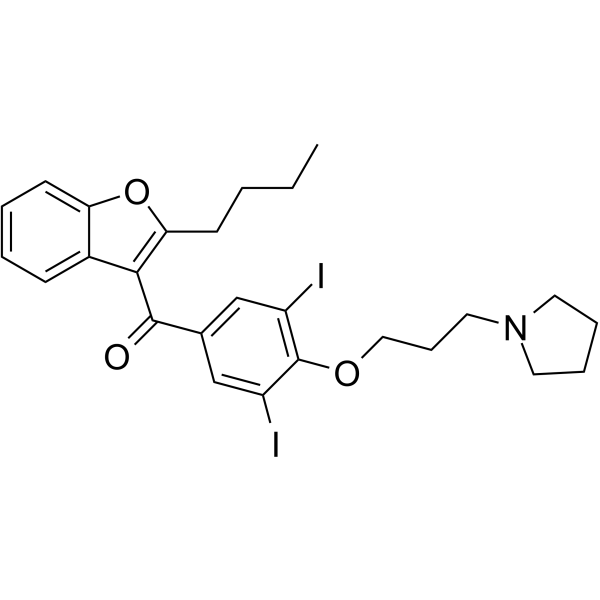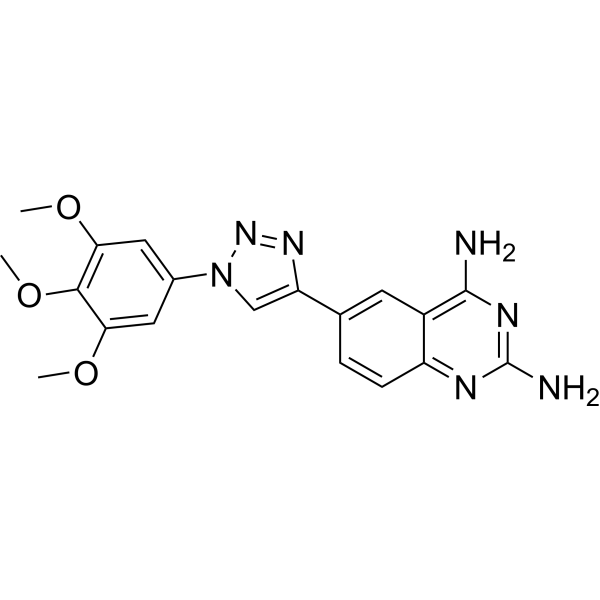Recombinant Proteins(重组蛋白)
Recombinant proteins are a new combination of genes that forms DNA. Recombinant DNA technology allows for the production of wild type and modified human and mammalian proteins at bulk quantities. Recombinant proteins are made from cloned DNA sequences which usually encode an enzyme or protein with known function
Recombinant proteins are made through genetic engineering, also called gene splicing or recombinant DNA technology. By putting human, animal or plant genes into the genetic material of bacteria, mammalian or yeast cells, these microorganisms can be used as factories or producers to make proteins for medical, academic and research uses.
A vector is simply a tool for manipulating DNA and can be viewed as a "transport vehicle" for the production of proteins from specific DNA sequences cloned into them. Purification and expression of a protein can sometimes be quite complicated & time-consuming, therefore an additional tag is used in addition to the specific DNA sequence which will facilitate the purification & expresion of the recombinant protein.
Recombinant Proteins are proteins that their DNA that has been created artificially. DNA from 2 or more sources which is incorporated into a single recombinant molecule. The DNA is first treated with restriction endonuclease enzyme which the ends of the cut have an overhanging piece of single-stranded DNA. These are called "sticky ends" because they are able to base pair with any DNA molecule containing the complementary sticky end. DNA ligase covalently links the two strands into 1 recombinant DNA molecule.
Recombinant DNA molecule must be replicated many times to provide material for analysis & sequencing. Producing many identical copies of the same recombinant DNA molecule is called cloning. Cloning is done in vitro, by a process called the polymerase chain reaction (PCR). Cloning in vivo can be done in unicellular microbessuch as E. coli, unicellular eukaryotes like yeast and in mammalian cells grown in tissue culture.
Recombinant DNA must be taken up by the cell in a form in which it can be replicated and expressed. This is achieved by incorporating the DNA in a vector. A number of viruses (both bacterial and of mammalian cells) can serve as vectors.
Recombinant DNA is also sometimes referred to as chimera. When combining two or more different strands of DNA.There are 3 different methods by which Recombinant DNA is made. 1. Transformation, 2. Phage-Transfection 3.Yeast, Plant & Mammalian Transformation. When using the method of transformation one needs to select a piece of DNA to be inserted into a vector, cut a piece of DNA with a restriction enzyme and ligate the DNA insert into the vector with DNA Ligase. The insert contains a selectable marker which allows for identification of recombinant molecules. An antibiotic marker is used in order to cause death for a host cell which does not contain the vector when exposed to a certain antibiotic.
Trasnformation is the insertion of the vector into the host cell. The host cells are prepared to take up the foreign DNA. Selectable markers are used for antibiotic resistance, color changes, or any other characteristic which can distinguish transformed hosts from untransformed hosts. Yeast, Plant & Mammalian Transformation is done by micro-injecting the DNA into the nucleus of the cell being transformed. Phage-Transfection process, is equivalent to transformation except for the fact that phage lambda or MI3 is used instead of bacteria.
These phages produce plaques which contain recombinant proteins which can be easily distinguished from the non-recombinant proteins by various selection methods.
Significant amounts of recombinant protein are produced by the host only when expression genes are added. The Protein’s expression depends on the genes which surround the DNA of interest, this collection of genes act as signals which provide instructions for the transcription and translation of the DNA of interest by the cell. These signals include the promoter, ribosome binding site, and terminator.
The recombinant DNA is inserted into expression vectors which contain the promoter, ribosome binding site, and terminator.
In prokaryotic systems, the promoter, ribosome binding site, and terminator have to be from the same host since the bacteria is unlikely to understand the signals of human promoters and terminators. The designated gene must not contain human introns since the bacteria does not recognize it and this results in premature termination, and the recombinant protein may not be processed correctly, be folded correctly, or may even be degraded.
The peptide sequence can be added as an extension at the N-terminal. Researchers can select the specific purification system which they would like to use. The unique vectors available contain several features needed for the production of bulk quantities of the target protein. The peptide sequence is usually placed in the vector so that it is designed to be a point of attack for a specific protease. Thus, after the recombinant protein is expressed and extracted from bacteria, specific peptide extension can be used to purify the protein and subsequently removed from the target protein to generate a nearly natural sequence on the final product.
6 or more consistent Histidine residues act as a metal binding site for recombinant protein purification and expression. The hexa-His sequence is called a His-Tag sequence which can be placed on the N-terminal of a target protein by using vectors from various commercial molecular biology companies. The His-Tag contains a cleavage site for a specific protease. His-Tag recombinant proteins are purified by Metal Chelate Affinity Chromatography such as nickel ion columns that are used as the heavy metal ion and the His-Tag protein is eluted from the metal-chelate column with Histidine or imidazole. Then the purified His-Tag protein is treated with the specific protease to cleave off the His-Tag or not if the tag doesn’t affect the active site of the protein.
Proteins have metal binding sites which can be used for the purification of recombinant and natural proteins. This type of purification is rather simple when using a gel bead which is covalently modified so that it displays a chelator group for binding a heavy metal ion like Ni2+ or Zn2+. The chelating group on the gel bead contains a small amount of the ligands needed to hold the metal ion. So when the protein’s metal binding site finds the heavy metal, it will bind by providing the ligands from its metal binding site to attach to the metal ion displayed on the chelator location of the gel bead. This purification method is quite identical to affinity chromatography when purifying metal-binding class of proteins.
Products for Recombinant Proteins
- Actin(7)
- ADAM(3)
- Adaptor-Related Protein Complex(3)
- ADP-Ribosylation Factor(21)
- Ag85(2)
- Albumin(7)
- Allergy(156)
- Alpha-2-HS-Glycoprotein(4)
- Anaplasma(3)
- Angiogenin(2)
- Ankyrin Repeat Domain(5)
- Annexin(20)
- Anterior Gradient Protein(3)
- ASF1 Anti-Silencing Function 1(2)
- ATP Synthase Mitochondrial(3)
- ATPase(9)
- Autophagy Related(4)
- B Cell Lymphoma(24)
- B9 Protein(2)
- Babesia Microti(3)
- Baculoviral IAP Repeat-Containing(3)
- Bartonella H.(3)
- Basic Transcription Factor(2)
- BATF(2)
- Bax(2)
- Beta 2 Microglobulin(3)
- BID(4)
- Biglycan(3)
- Bridging Integrator(2)
- Bromodomain Containing(3)
- Cadherin(8)
- Calbindin(4)
- Calcium Binding Protein(30)
- Calmodulin(4)
- Calpain(2)
- Calponin(2)
- Calreticulin(2)
- Calumenin(2)
- Candida Albicans(4)
- Canopy FGF Signaling Regulator(3)
- Capping Protein(2)
- Caspase Recruitment Domain Family(2)
- CCR4-NOT Transcription Complex(2)
- CEA(9)
- CEBP(2)
- Cell Division Cycle(5)
- Cellular Retinoic Acid Binding Protein(2)
- Centrin(3)
- Centromere Protein(7)
- Charged Multivesicular Body Protein(3)
- Chloride Intracellular Channel(2)
- Chromatin Modifying Protein(4)
- Chromobox(3)
- Chromogranin(6)
- Chromosome Open Reading Frame(17)
- Clathrin(2)
- Coagulation Factors(7)
- Cofilin(2)
- Coiled-Coil Domain(9)
- Collagen(16)
- COMM Domain Containing(4)
- Complement Component(55)
- COP9 Signalosome(3)
- C-Reactive Protein(6)
- Crystallin(13)
- C-type Lectin Domain(11)
- CUE Domain Containing(2)
- Cystatin(25)
- Cysteine-Rich(2)
- Cysteine-Rich Secretory Protein(3)
- Cytochrome(9)
- Cytohesin(4)
- Cytokeratin(14)
- DCUN1D(3)
- DEAD Box Protein(2)
- Decorin(3)
- Density Lipoprotein(8)
- Developmental Pluripotency Associated(3)
- Dickkopf-Related Protein(7)
- DiGeorge Syndrome Critical Region(2)
- DNA-Damage Protein(7)
- Dynactin(4)
- Dynein Light Chain(7)
- Dysbindin(2)
- Ectodysplasin(4)
- Elongator Acetyltransferase Complex(2)
- Endoplasmic Reticulum Protein(3)
- Endothelial Cell-Specific Molecule 1(4)
- EPH Receptor(6)
- Ephrin(13)
- ERCC(1)
- Eukaryotic Translation Initiation Factor(21)
- Exosome Component(6)
- FABP(28)
- Family with Sequence Similarity(8)
- F-Box Protein(1)
- Ferritin(3)
- Fibrinogen(3)
- Fibronectin Type III Domain Containing(2)
- Four And A Half LIM(2)
- Fragile Histidine Triad(2)
- G Antigen(3)
- GABA(A) Receptor-Associated Protein(3)
- Gastrokine(3)
- GDP Dissociation Inhibitor(2)
- General Transcription Factor(6)
- GIPC PDZ Domain(2)
- Gliadin(3)
- Glycophorin(3)
- Glycoprotein Nmb(3)
- Glypican(3)
- Gremlin(2)
- GTPase IMAP Family(2)
- GTP-Binding Protein(2)
- Guanine Nucleotide Binding Protein(11)
- Hairy and Enhancer of Split(2)
- Haptoglobin(5)
- Heat Shock Protein(66)
- Hematological And Neurological Expressed(2)
- Hemoglobin(8)
- Hemopexin(3)
- High-Mobility Group(8)
- HINT(2)
- HLA(8)
- HNRNP(3)
- Hypoxia-Inducible Factor(3)
- IMPAD1(4)
- Ig Heavy Chain Constant Region(7)
- Inhibitor of DNA Binding(2)
- Inhibitor of Growth Family(2)
- Integrin(52)
- Intercellular Adhesion Molecule(9)
- Junctional Adhesion Molecule(3)
- Karyopherin(2)
- KCTD(4)
- Killer Cell(8)
- Killer Cell Lectin-like Receptor(9)
- Kirsten Rat Sarcoma Viral Oncogene(2)
- Kruppel-Like Factor(6)
- Lactoferrin(3)
- LBP(3)
- Leukocyte Cell Derived Chemotaxin(3)
- Leukocyte-Associated Ig-Like Receptor(3)
- LIN Protein(5)
- Listeriolysin(2)
- LRG1(3)
- Lymphocyte Antigen(3)
- Lysosomal-Associated Membrane Protein(3)
- MAD2(2)
- MAF(3)
- Mago-Nashi Homolog(2)
- Maltose Binding Protein(3)
- Mediator Complex(5)
- Melanoma Antigen Family A(8)
- Member RAS Oncogene Family(40)
- Mesoderm Development Candidate(2)
- Methylmalonic Aciduria(2)
- MHC class I chain-related gene(3)
- Microfibrillar Associated Protein(4)
- Microtubule-Associated Protein(8)
- Mitochondrial Ribosomal Protein(8)
- Mitochondrial Transcription Factor(2)
- Mortality Factor(2)
- Myelin Basic Protein(1)
- Myelin Oligodendrocyte Glycoprotein(4)
- Myoglobin(4)
- Myosin Light Chain(12)
- Myxovirus(3)
- NANOG(4)
- NCK Adaptor Protein(2)
- NECTIN(3)
- Nescient Helix Loop Helix(2)
- Neuronal Calcium Sensor(2)
- Neutrophil Cytosolic Factor(2)
- NFKB Inhibitor(5)
- NHP2(2)
- N-Myc Downstream Regulated(3)
- Non-Metastatic Cells(7)
- NPM(2)
- NTF2-like Export Factor(1)
- Nucleobindin(2)
- Nucleopurin(2)
- Nucleosome Assembly Protein(2)
- Orosomucoid(5)
- Other(755)
- Outer Membrane Protein(1)
- p53(20)
- Paired Box(2)
- Parkinson Disease Protein(3)
- Parvalbumin(2)
- PCNA(2)
- PDZ Domain Containing(2)
- Pentraxin(3)
- Peroxisomal Biogenesis Factor(2)
- PHD Finger Protein(2)
- Phosducin-Like(2)
- Phosphatase and Tensin(1)
- Phospholipid Scramblase(2)
- PIH1 Domain Containing(2)
- Pim Oncogene(2)
- PITPN(2)
- Polymerase (RNA) (DNA directed) Polypeptide(7)
- Prefoldin(5)
- Pregnancy Specific Beta-1-Glycoprotein(4)
- Prion Protein(2)
- Processing Of Precursor(2)
- Profilin(4)
- Programmed Cell Death(8)
- Prohibitin(2)
- Proprotein Convertase Subtilisin/Kexin(1)
- Protein C-Ets(2)
- Protein Phosphatase(2)
- Prothymosin(2)
- RAD51(9)
- RAN Binding Protein(2)
- Ras-Related C3 Botulinum Toxin Substrate(5)
- RASSF(2)
- Receptor Activity-Modifying Protein(2)
- Regenerating Islet-Derived(4)
- Regulator of Calcineurin(3)
- Regulator of G-Protein Signaling(9)
- Related RAS Viral (r-ras) Oncogene(2)
- Relaxin(3)
- Renin(5)
- Reticulocalbin(2)
- Retinoblastoma(3)
- Retinoic Acid Early Transcript(6)
- Retinoic Acid Receptor Responder(4)
- Rho Family GTPase(2)
- Rho GDP Dissociation Inhibitor(2)
- Ribosomal Protein(30)
- Ring Finger Protein(5)
- RNA Binding Motif Protein(3)
- R-Spondin(4)
- RWD Domain Containing(2)
- Sclerostin(3)
- SDHAF(2)
- Secretagogin(2)
- Secreted Frizzled-Related Protein(6)
- Secretoglobin(4)
- Secretogranin(2)
- Selectin(7)
- Selenoprotein(2)
- Septin(3)
- Serglycin(2)
- Serine Peptidase Inhibitor(3)
- Serpin(27)
- SERTA Domain Containing(2)
- SH2 Domain(2)
- SH3 Domain(6)
- SIGLEC(5)
- Signal Recognition Particle(2)
- Signal Sequence Receptor(3)
- Signal-Regulatory Protein(6)
- Single-Stranded DNA Binding Protein(2)
- Sirtuin(35)
- SLAM Family(5)
- SMAD(3)
- SNRP(15)
- Solute Carrier Family(3)
- Sorting Nexin(2)
- SPSB(1)
- sRAGE(3)
- SRY (Sex Determining Region Y)-Box(3)
- Stathmin(4)
- STIP(3)
- Streptavidin Proteins(5)
- Superoxide Dismutase(36)
- Surfeit(2)
- Synaptobrevin(11)
- Synaptosomal Associated Protein(5)
- Synaptotagmin(5)
- Syndecan(5)
- Syntaxin(10)
- Synuclein(7)
- Tachykinin(2)
- TAR DNA(4)
- TBC1 Domain Family(2)
- TCL(2)
- THAP Domain(4)
- Thioredoxin(15)
- TIGAR(3)
- Tissue Factor Pathway Inhibitor(3)
- TNF receptor-Associated Factor(2)
- Toll Like Receptor(1)
- Trafficking Protein Particle Complex(4)
- Transcription Elongation Factor(9)
- Transferrin(3)
- Transforming Growth Factor Beta Induced(5)
- Transgelin(2)
- Translocase Of Outer Mitochondrial Membrane(2)
- Triggering Receptor Expressed on Myeloid Cells(2)
- Tripartite Motif(4)
- Tropomyosin(3)
- Troponin(16)
- TROVE Domain Family(3)
- Trypsin(4)
- TTC(3)
- Tubulin Folding Cofactor(5)
- Tubulin Gamma(2)
- U6 Small Nuclear RNA(5)
- Ubiquinol-Cytochrome C Reductase(3)
- Ubiquitin(16)
- UCHL1(4)
- UL16 binding protein(7)
- Uroplakin(2)
- Vacuolar Protein Sorting(7)
- Vascular cell adhesion molecule(5)
- V-crk Sarcoma Virus CT10(2)
- Vimentin(3)
- Visinin-Like Protein(2)
- V-ral Simian Leukemia Viral Oncogene(3)
- WAP Four-Disulfide Core Domain(2)
- Y. Enterocolitica(8)
- Zinc Finger(16)
- Default Categoryobox(9)
- Default Categoryr Homolog(3)
- MOB1(2)
- POU Class(4)
- Protein-A(24)
- SIX Default Categoryobox(2)
- Synovial Sarcoma(2)
- Mps One Binder Kinase Activator(2)
- X Breakpoint(2)
- p62(3)
- Cat.No. 产品名称 Information
-
GP22676
ADAM10 Human, Sf9
A Disintegrin and Metalloproteinase Domain 10 Human Recombinant, Sf9

-
GP22677
ADAM12 Human
A Disintegrin and Metalloproteinase Domain 12 S-Isoform Human Recombinant

-
GP22678
ADFP Human
Adipose Differentiation-Related Protein Human Recombinant

-
GP22679
Adipsin Human
Complement Factor D Human Recombinant

-
GP22680
Adipsin Human, Sf9
Complement Factor D Human Recombinant, Sf9

-
GP22681
ADRM1 Human
Adhesion Regulating Molecule 1 Human Recombinant

-
GC64527
ADTL-SA1215
ADTL-SA1215 是一种调节三阴性乳腺癌自噬的特异性 SIRT3 小分子激活剂。

-
GP22682
AES Human
Amino-Terminal Enhancer of Split Human Recombinant

-
GP22683
AFAP1 Human
Actin Filament Associated Protein 1 Human Recombinant

-
GP22685
AFP Protein
Alpha Fetoprotein Human Recombinant

-
GP22686
Ag85A
Mycobacterium Tuberculosis major secretory protein Antigen 85A Recombinant

-
GP22687
Ag85B
Mycobacterium Tuberculosis major secretory protein Antigen 85B Recombinant

-
GP22689
AGO2 (1-200) Human
Argonaute 2 (1-200 a.a.) Human Recombinant

-
GP22688
AGO2 Human
Argonaute 2 Human Recombinant

-
GP22690
AGR2 Human
Anterior Gradient Protein 2 Homolog Human Recombinant

-
GP22691
AGR2 Mouse
Anterior Gradient Protein 2 Homolog Mouse Recombinant

-
GP22692
AGR3 Human
Anterior Gradient Protein 3 Homolog Human Recombinant

-
GP25055
AHA1 Human
Activator of HSP90 ATPase-1 Human Recombinant

-
GP22694
AHSG
Alpha-2-HS-Glycoprotein Human

-
GP22693
AHSG Human
Alpha-2-HS-Glycoprotein Human Recombinant

-
GP22695
AHSG Human HEK
Alpha-2-HS-Glycoprotein Human Recombinant HEK

-
GP22696
AHSG Mouse
Alpha-2-HS-Glycoprotein Mouse Recombinant

-
GP22697
AHSP Human
Alpha Hemoglobin Stabilizing Protein Human Recombinant

-
GP22698
AIDA Human
Axin Interactor Dorsalization Associated Human Recombinant

-
GP22699
AIFM1 Human
Apoptosis-Inducing Factor, Mitochondrion-Associated, 1 Human Recombinant

-
GP22700
AIP Human
Aryl Hydrocarbon Receptor Interacting Protein Human Recombinant

-
GC40638
Alclometasone Dipropionate
阿氯米松双丙酸酯,Sch 22219
A corticosteroid
-
GP22702
ALK/P80 Human
ALK/P80 Protein Human Recombinant

-
GP24856
Aln G 1.0101
Major pollen allergen Aln g 1 Recombinant

-
GP25132
Aln G 4.0101
Polcalcin Aln g 4 Recombinant

-
GP22706
AMBP
Alpha-1 Microglobulin Human Recombinant

-
GP22707
AMELX Human
Amelogenin, X-Linked Human Recombinant

-
GP22708
AMH Human
抗苗勒管激素人类重组体

-
GC20261
Amidopyrine
Aminopyrine, 4-Dimethylaminoantipyrine, NSC 4993

-
GP22709
AMIGO2 Human
Adhesion Molecule with Ig-Like Domain 2 Human Recombinant

-
GP22710
AMMECR1L Human
AMMECR1-Like Human Recombinant

-
GP22711
AMN Human
Amnion Associated Transmembrane Protein Human Recombinant

-
GP22712
AMTN Human
Amelotin Human Recombinant

-
GP22713
ANAPC13 Human
Anaphase Promoting Complex Subunit 13 Human Recombinant

-
GP22714
Anaplasma Msp5
Anaplasma phagocytophilum Msp5 Recombinant

-
GP26204
Anaplasma OmpA
Anaplasma OmpA produced in E

-
GP22715
Anaplasma p44
Anaplasma phagocytophilum p44 Recombinant

-
GP22716
ANG Human
Angiogenin Human Recombinant

-
GP22717
ANG Human, Sf9
ANG Human Recombinant, Sf9

-
GC49419
Aniline-d5
苯胺-2,3,4,5,6-d5
An internal standard for the quantification of aniline
-
GP22720
ANKRA2 Human
Ankyrin Repeat Family A2 Human Recombinant

-
GP22721
ANKRD1 Human
Ankyrin Repeat Domain 1 Human Recombinant

-
GP22722
ANKRD54 Human
Ankyrin Repeat Domain 54 Protein Human Recombinant

-
GP22723
ANP32A Human
Acidic Nuclear Phosphoprotein 32 Family Member A Human Recombinant

-
GC73363
Antitumor agent-81
Antitumor agent-81(化合物5a)是一种低细胞毒性的P62-RNF168激动剂,可增强P62和RNF168之间的相互作用。





